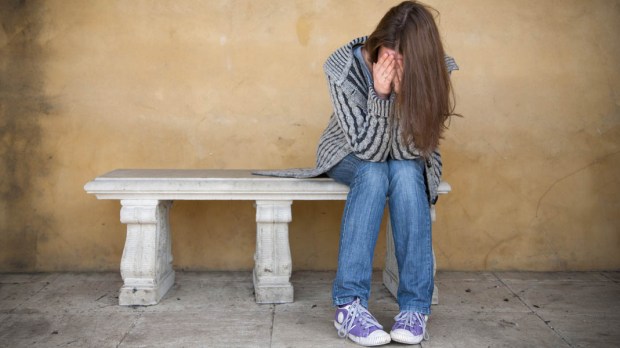Lenten Campaign 2025
This content is free of charge, as are all our articles.
Support us with a donation that is tax-deductible and enable us to continue to reach millions of readers.
A few months ago, I got the news that an extended family member had died by suicide. As someone whose family had been blessed not to experience this before, the news was met with quite a shock, which was soon replaced with deep sadness in the days and weeks that followed. Of course, his immediate family continues to try and cope with it. The pall that was cast over us all during the funeral proceedings still remains.
For anyone who’s had a close family member or friend die by suicide, there is a deep, visceral pain and sadness that is immediately present, but difficult to articulate. Any death to an otherwise healthy person is tragic. But what makes suicide so difficult to bear are the inherent (and often unintended) messages it conveys.
A year or so ago, I published an article in which I contended that the death of a significant other is easier to cope with than being rejected by them. My belief (as well as others) is that we as human beings are wired in a particular way so that when we open ourselves in a loving, vulnerable way to someone in a committed romantic relationship, being rejected by them creates a deep scar that’s very difficult to heal, even more so than dealing with their untimely death.
It is this factor, coupled with the obvious loss of the loved one, that makes suicide such a scourge. It’s hard enough to deal with an early demise, but what makes suicide unique is that in taking one’s own life, the person has implicitly rejected not just his or her own being, but also the love and support of those most dear. Now, most people who complete suicide don’t intend this, and often likely don’t even perceive it this way. In fact, it’s reasonable to assume (based on suicide notes left behind) that some people who commit suicide feel they are doing others a favor (i.e., “I was causing others and myself more trouble than I was worth and/or they just couldn’t help me”).
But the reality is that no matter what compromising circumstance or helpless state they find themselves in, it only takes a funeral to realize that there were avenues available for help to address whatever situation they were in. Yet, in making the unalterable decision to take their life, they in essence have rejected any (implicit or explicit) offer of help and in the process, have rejected the very love that many around them so wished to give.
For all those who have or are considering suicide, it’s important to understand that this singular decision leaves behind a lifetime of rejection and pain for those who care for them. Any attempt to minimize or justify this decision misses the point.
Yet, for those who’ve been left behind, there are options for resilience even though they weren’t privy to this life-altering decision. For starters, it should be noted that anything as tragic as suicide doesn’t allow for closure; life is forever altered, and the question is not how to “get over it” or “get through it” but rather how to regain a sense of life and purpose in the midst of it.
Although each person reacts to tragedy differently, there are a few keys to finding a renewed sense of vitality and meaning.
For starters, seeking out regular movement on a daily basis is key. Those who move their bodies regularly (especially outdoors) are utilizing one of the most time-honored methods of healing, and those who don’t are asking for stagnation in more than just a physical way.
Additionally, decades of research have shown — and millennia of examples have proven — that writing or journaling allows individuals to create a narrative that is believable, bearable, and even sometimes understandable. Negative emotion will always remain to some degree, but there is no substitute for “making sense” of the story in our own written terms.
Finally, although the urge for many is to withdraw, it’s critical that as time passes, survivors of suicide do not pull away from other loved ones, but rather accept and seek out invitations to socialize regularly. There’s nothing wrong with seeking out quiet, alone time; in fact, this is absolutely necessary for healing. But when months and years have gone by, and previously active relationships now remain rather dormant and distant, this chronic disconnection only creates further avenues for misery and hopelessness.
Beyond these central means of healing for all sorts of difficult circumstances, there are a few specific things that survivors of suicide need to understand. First, although suicide does come with a stigma, research has clearly indicated that the stigma perceived is far worse than the actual stigma that exists. Put another way, most people are far more understanding, supportive, and less judgmental in situations like these than we believe.
Second, and connected to the first, tragedies such as suicide often create many questions for family and friends who seek to support those close to the deceased. Left unaddressed, these questions often fester and become parts of conjectures and rumors, and can create even a further sense of uneasiness and disconnect. All families affected by suicide have an absolute right to privacy. But it often serves these families well to provide a certain amount of information so that misinformation is minimized and communication lines remain open. It’s not easy to do this, but getting out ahead of the “whispers” is a critical step that all should consider taking.
Finally, on the previous topic of rejection, close friends and family members must consider that although their loved one is gone, the love they have for him or her will always remain. Although this love can still be expressed in various ways, the reality is that it’s often necessary to find ways to channel (shall we even say transfer) this love in a way that not only provides for another, but also provides an open door where one was closed.
The mechanisms of this channeling might look very different from person to person. For some, it might be to support those affected by suicide, while for others it be to sublimate this love into taking care of the elderly or saving maltreated animals. Whatever the focus, the reality is that when this love is not channeled in some way, it can create a back flow, a quagmire, that festers indefinitely. Instead of flowing like a river or a stream, this beautiful conduit of energy can become a swamp. We as human beings need people and a purpose to give of ourselves even if the object of our affection is no longer available to us here on earth. In doing so, what started as a rejection may turn out to be a genuine sharing of the broken, yet worthy and resilient people that we are.

Read more:
5 Things you should never say to someone who’s grieving

Read more:
Here’s how high schoolers are using clothespins to prevent suicide

